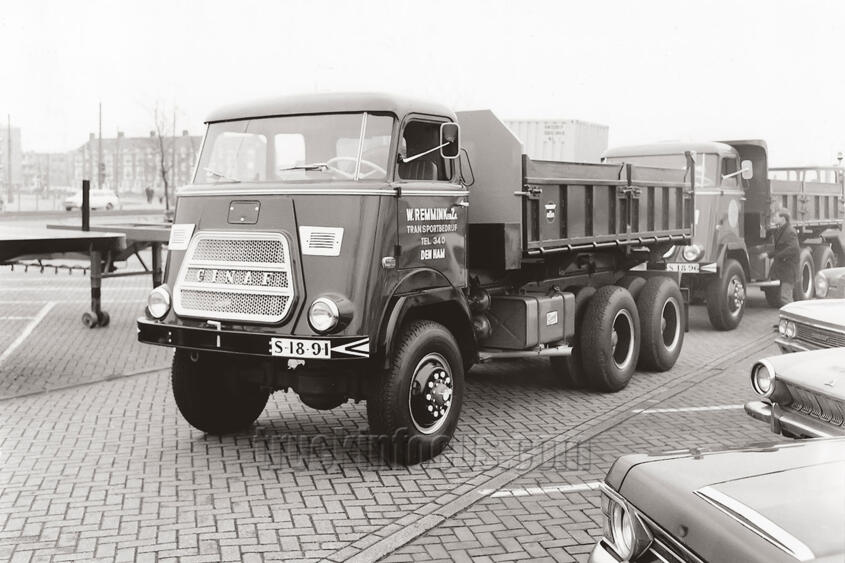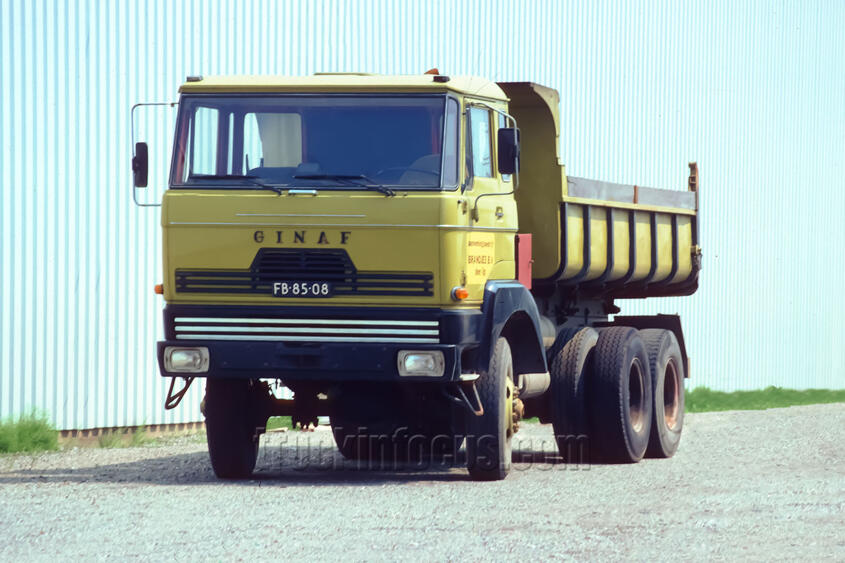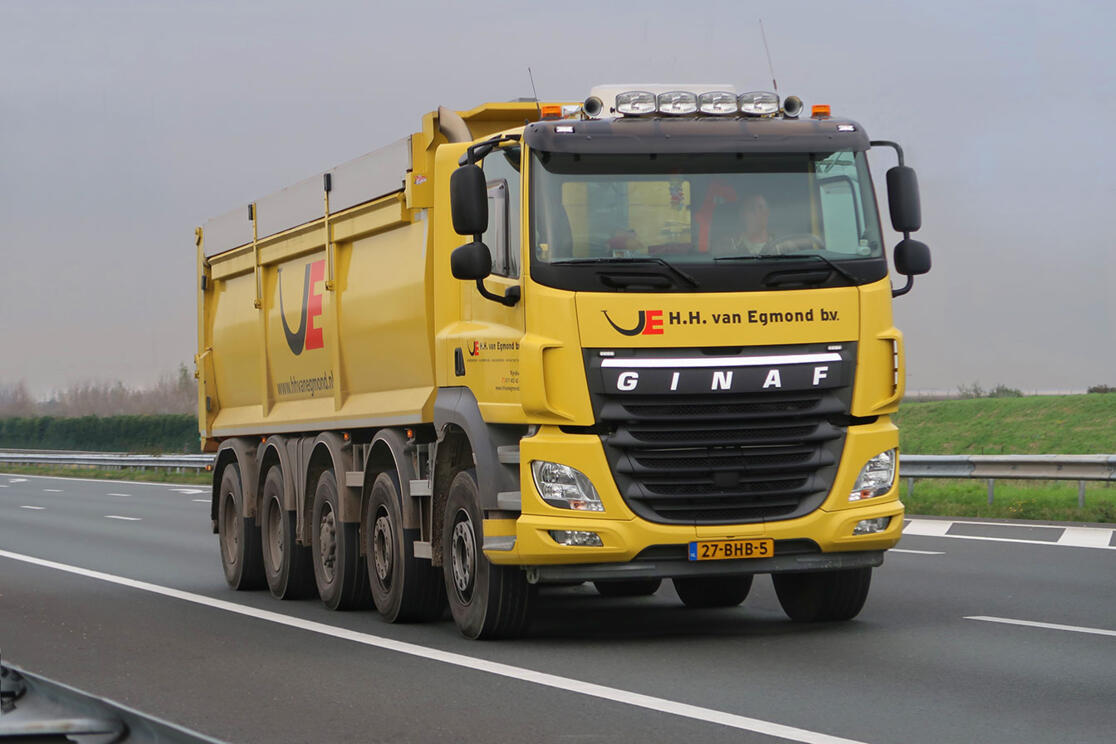The beginnings
The brand name GINAF was first seen on a dump truck in 1967. But the history of the family business goes back to before the Second World War.
In 1933, Evert van Ginkel senior founded a car dismantling and car trading company in Ederveen in the Dutch province of Gelderland. Business was good at first. But times changed on May 10, 1940, when the German army invaded the Netherlands. After five days of fierce resistance, the Netherlands capitulated. For almost five years, the Germans ruled ruthlessly over the small neighboring country, as they did over Belgium, Luxembourg and large parts of France. In 1944, Allied troops liberated these countries from German occupation, and on May 8, 1945, World War II ended in Europe with the surrender of Germany.
The economy was shattered, towns and villages were destroyed and people had to find ways to make a new start. Evert van Ginkel saw his opportunity in converting surplus American Army trucks. He already had experience with pre-war Ford Model A cars, which he converted into agricultural tractors.
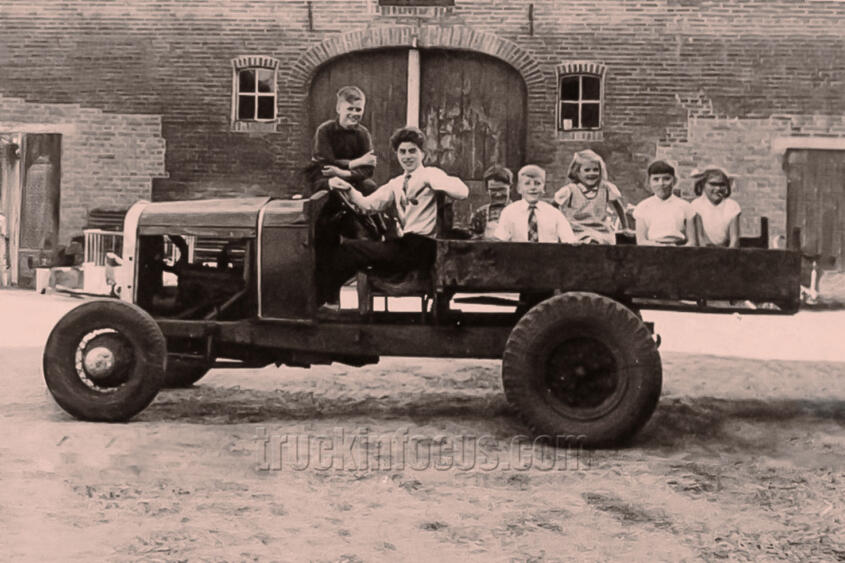
In addition to this activity, he now began adapting US Army surplus trucks for the civilian market. For this venture, van Ginkel acquired a large stock of vehicles and parts from military depots. This material proved to be very valuable in the construction of heavy dump trucks. In 1948, Evert van Ginkel's sons Adrie and Wulfurt joined the company. A short time later the delivery of the hundredth Van Ginkel Ford A-tractor took place. Through the sons' efforts, the focus in the 1950s increasingly shifted to the conversion of former American troop transport trucks to civilian dump trucks.
From GMC and Diamond-T to REO
In addition to Dodge Power Wagons and Willys Jeeps, the Van Ginkels acquired dozens of GMC two-and-a-half-ton CCKWs with 6x6 drive. They replaced the thirsty gasoline engines with new diesel engines from Leyland and strengthened the suspension and rear axles. The changes increased the load capacity to seven tons. The Van Ginkels bought the swing axles from their competitor Terberg.
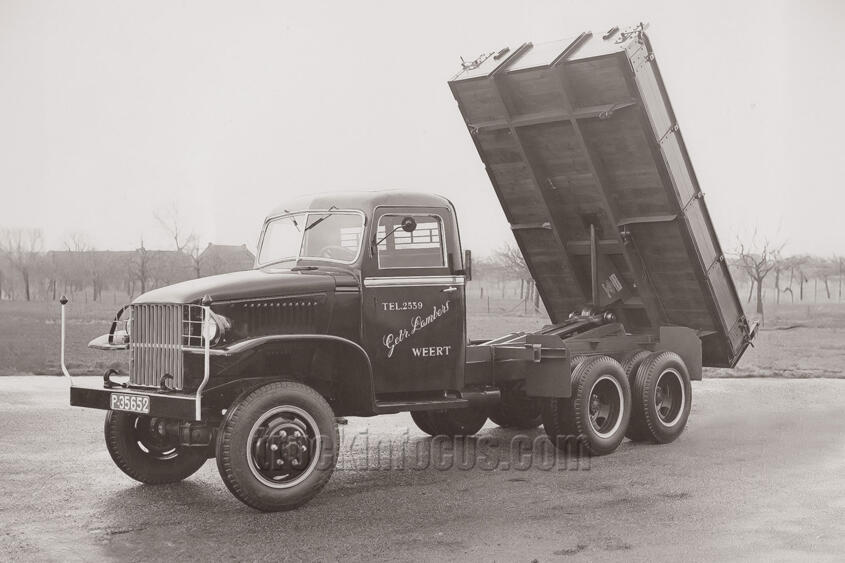
In 1959, the company name was changed to Gebr. van Ginkel Automobielbedrijf. After the third brother, Evert-Jan van Ginkel, joined the management of the company, the three decided to produce new trucks from the enormous stock of parts from the army depot. This involved two models, based on the "small" REO M 34 and the heavy M 52. The M 52 was also referred to as the "big REO" but was actually a Diamond-T. The M 34 could carry six tons of payload and the Diamond-T twelve tons. Both were equipped with closed cabs from the coachbuilders Gebr. van Dijk and Van Eck.
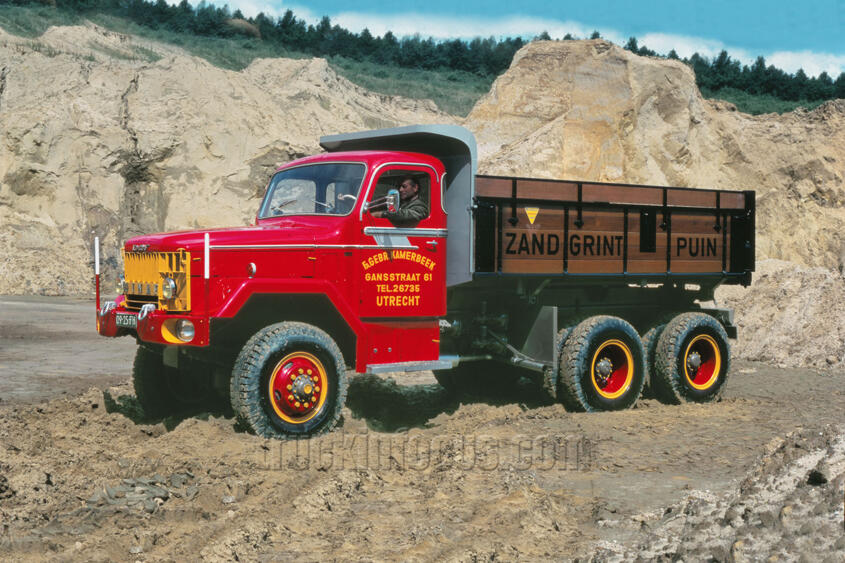
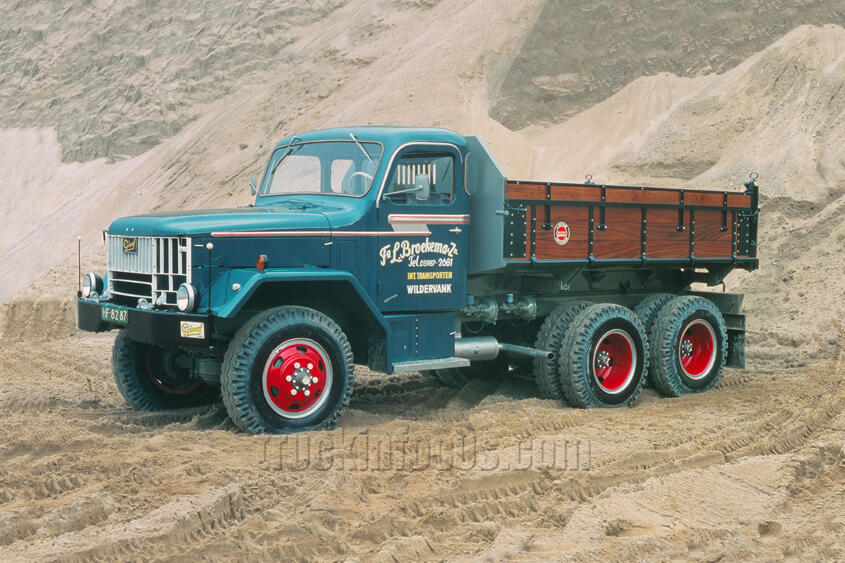
Customers could choose between DAF six-cylinder diesel engines with 120 and 165 hp. The pool of REO tippers and parts obtained from the U.S. Army in 1959 was so extensive that the company was able to draw on it for almost 30 years.
In 1963, the hundredth truck left the new production halls in Ederveen. Business flourished and barely two years later the production figure was one hundred tippers per year.
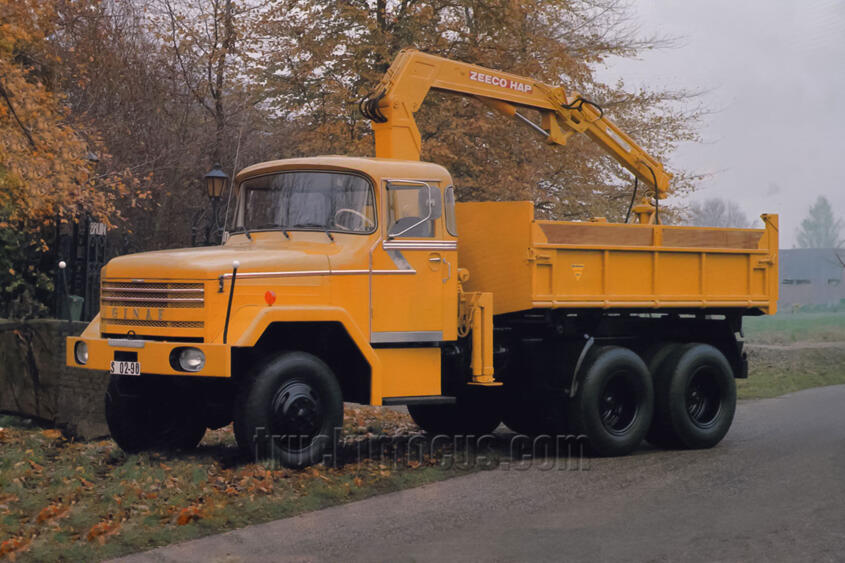
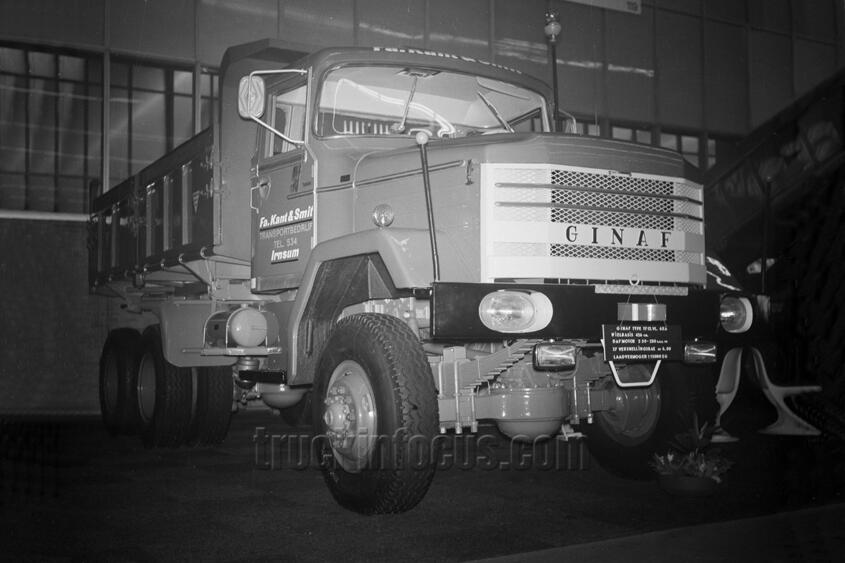
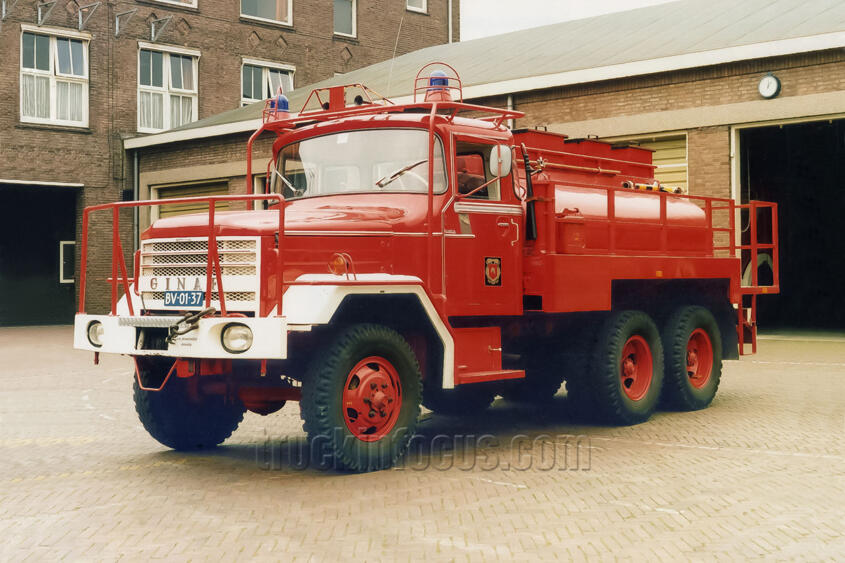
Different cab-over-engine designs
In order to offer customers more engine power, the Van Ginkels soon offered their tippers with 180 hp Leyland diesel engines and, after 1965, with the option of a Fiat or Scania-Vabis engine. Transmission choices were primarily Spicer six-speed and Timken transfer cases. Other equipment included Timken Rockwell axles and air-assisted Bendix hydraulic brakes. In 1963, a cab-over chassis with a DAF cab was built on a trial basis. Two or three were built with a cab that strongly resembled the DAF 2000 DO. This cab-over model with a small, flat "snout" was designed by Van Ginkel to accommodate the larger DAF 575 diesel engine and the protruding steering housing. The DAF 2000 DO was equipped with a Leyland diesel engine. In the mid-sixties, a few models appeared at Van Ginkel with a noticeably flat cab, and also about ten examples with Fiat cabs and the same diesel engine. In addition, some chassis were fitted with square-edged cabs manufactured by Van Dijk and Den Oudsten coachbuilders.
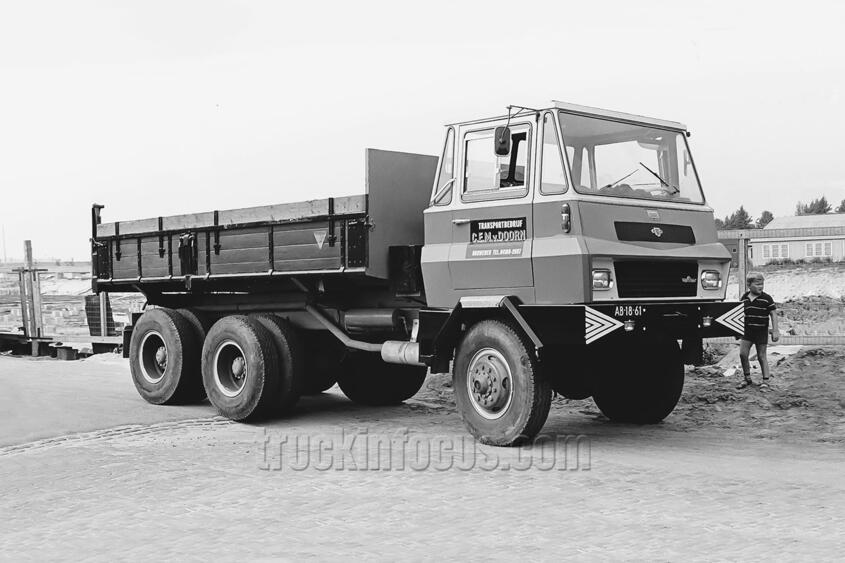
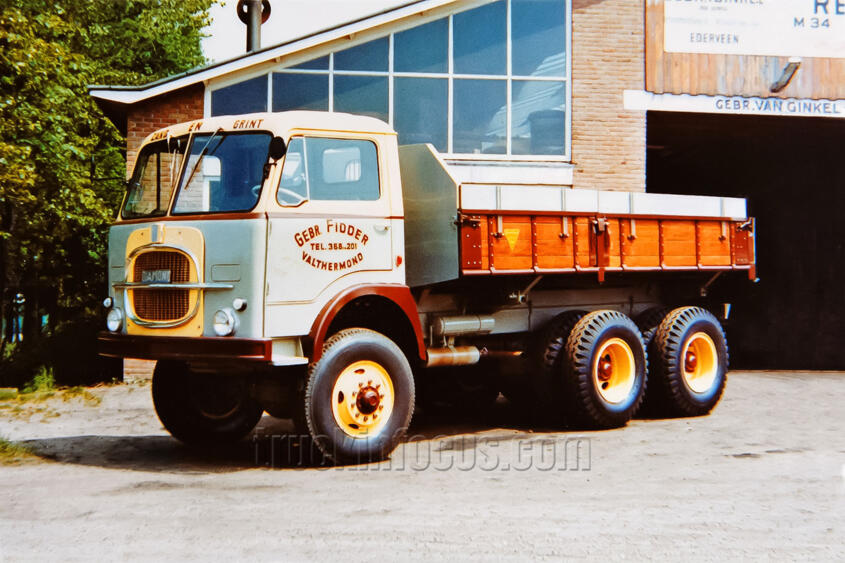
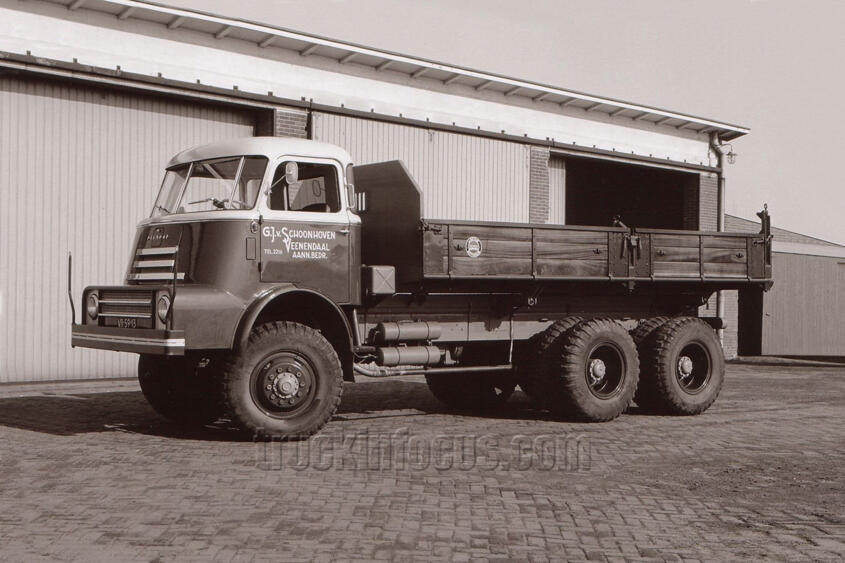
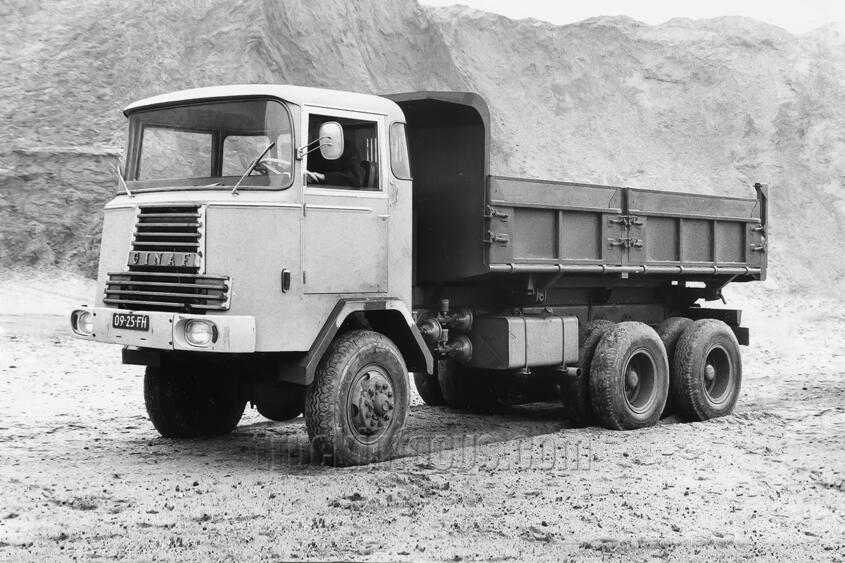
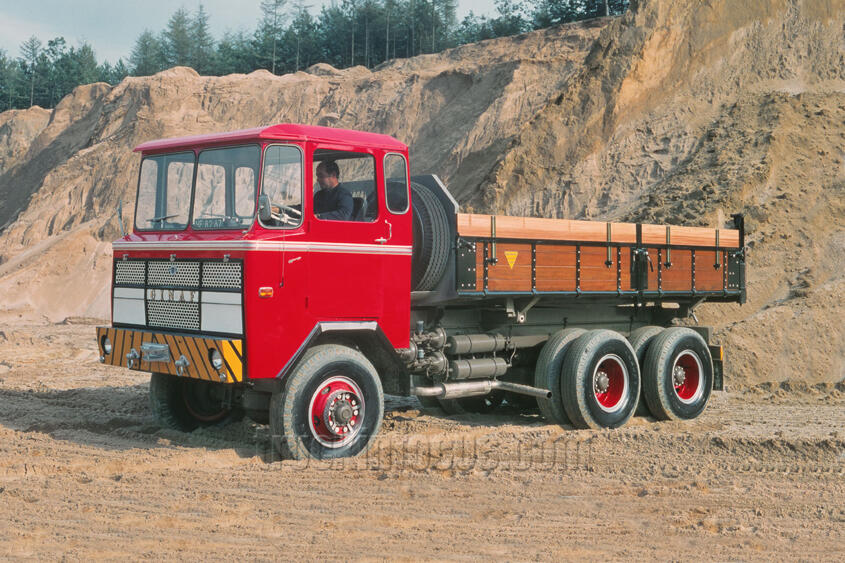
In 1967, the brand name GINAF was registered, an acronym for "Ginkels Automobiel Fabriek". Consequently, the REO, Diamond and DAF badges disappeared from the vehicles. Automobielfabriek Gebr. van Ginkel, as the company was now called, had developed into a genuine truck manufacturer specializing in the production of 4x4 and 6x6 chassis with tipper bodies for the construction industry. The REO M 34 conventional truck became the GINAF TF 8 and the M 52 became the TF 12. The cab-over models were henceforth called FS 138 and FS 200.
From 1967 the FS 12 6x6 for a payload of 12 tons was built. It featured a DAF cab, which of course carried the GINAF logo. A similar 6x6 was built on a Diamond-T chassis with DAF cab from 1963. In 1971, the 1000th truck left the factory in Ederveen.
